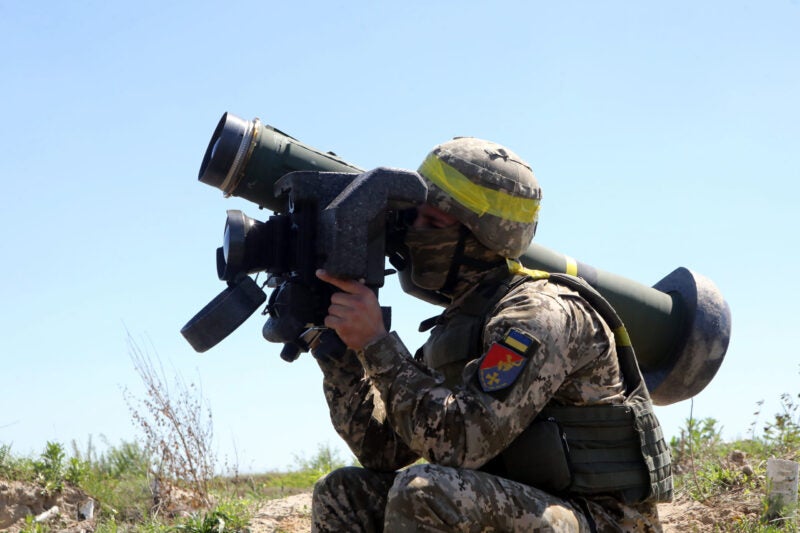
On 13 September the US Department of Defense (DoD) awarded a production contract for $311m to the Javelin Joint Venture (JJV) between Raytheon Missiles and Defense and Lockheed Martin.
The contract is for delivery of more than 1,800 Javelins that will serve as replenishment for DoD stocks sent to Ukraine following Russia’s invasion earlier in the year.
“This award is a great example of our continued commitment to strengthening our domestic industrial base while supporting our allies and partners,” Under Secretary of Defense for Acquisition and Sustainment William LaPlante said. “As we use various authorities to replenish our own stocks, industry can expect a strong, persistent demand signal.”
Man-portable missile systems: the Javelin and the AT4
The Javelin system is a highly valued component of the Ukrainian war effort. A soft launch ejects the missile with low recoil, enabling firing from inside buildings or covered positions. The lock-on-before-launch command, and direct- and top-attack modes make the system versatile in the field against tanks or other armoured targets.
This procurement is part of the Ukraine Supplemental Appropriation Act. The contract includes Ukraine Army replenishment, US Army FY22 procurement, and international partner missiles.
The purchase comes days after the award of an $81.8m contract to Saab to supply another man-portable missile system, the AT4 Multi-purpose Anti-armour Anti-personnel Weapon System (MAAWS).
“Lightweight, easy to use, and reliable, the AT4 has a strong record of success in the US Armed Forces. The type of variant that the country has ordered adapts the weapon specifically for use in confined spaces – giving the variant the ‘CS’ designation – reducing recoil and making it suitable for urban warfare,” said Madeline Wild, aerospace, defence and security analyst at GlobalData.
Challenges to delivery
Speaking of the recent order of AT4s from Swedish manufacturer Saab, Wild emphasised that the outsourcing will boost US weapon reserves at a difficult time for the sector. “The defence industry has been plagued with issues, especially when it comes to replacing similar weapons sent to Ukraine: namely the Javelin and Stinger.
“These, however, are both domestically produced and thus subject to the issues relating to workforce depletion and supply chain problems. Unlike them, the AT4 is produced by Saab, a Swedish manufacturer, and as such does not face US-specific, domestic manufacturing problems.”
To date, the JVV has produced more than 50,000 Javelin missiles and more than 12,000 reusable Command Launch Units. Javelin is expected to remain in the US weapon arsenal until 2050 and is subject to continual upgrades to support evolving operational needs.
“It is estimated that Javelin’s cost around 100 times more to fire than the AT4,” continued Wild. “When comparing the cost of the more highly rated anti-tank weapon to the anti-armour AT4, the choice of which platform can be used for sustained supply to Ukraine is clear. Coupled with the production issues the US is experiencing when it comes to replacing Javelin’s, it is possible that the AT4 will increasingly be seen as the portable anti-armour weapon of choice to send to Ukraine.
“The effect this may have on the success of the Ukrainian troops is a concern, with the Javelin still lauded for its successes in the conflict so far.”




